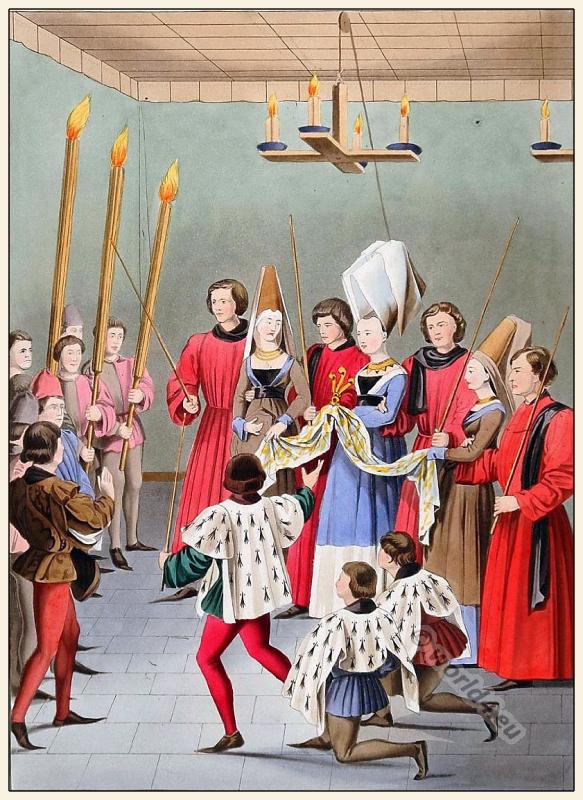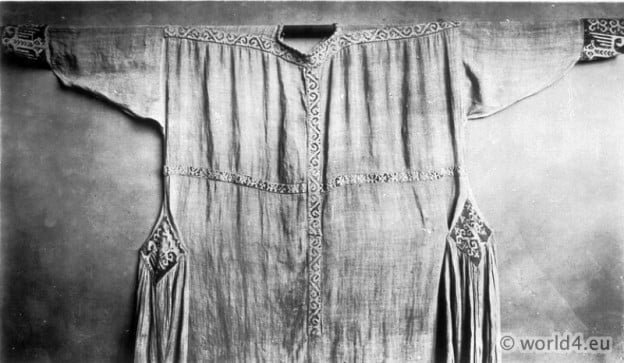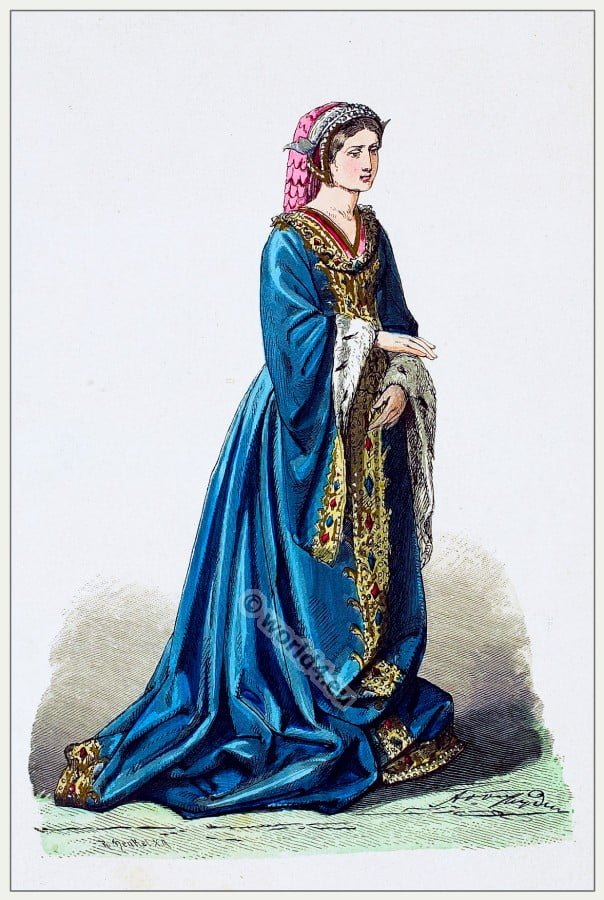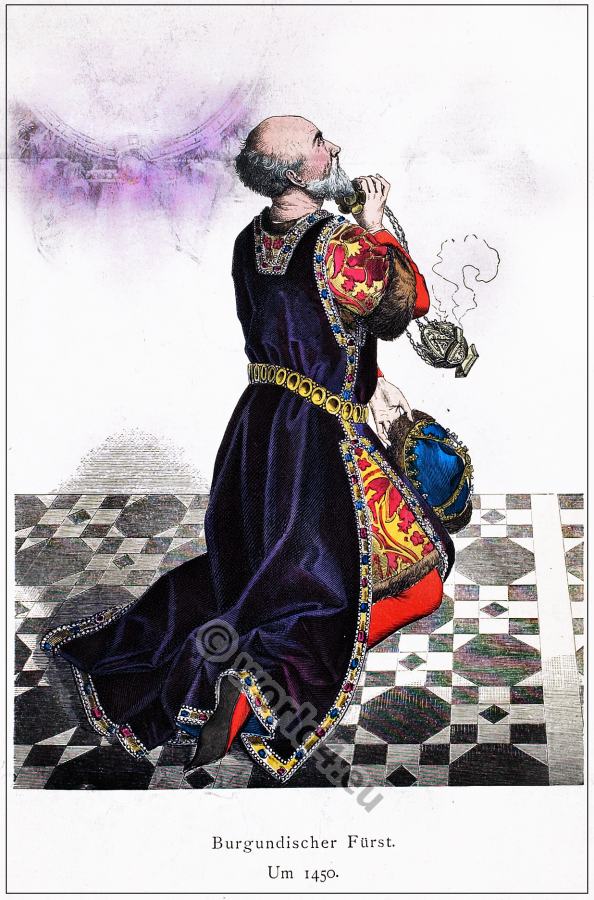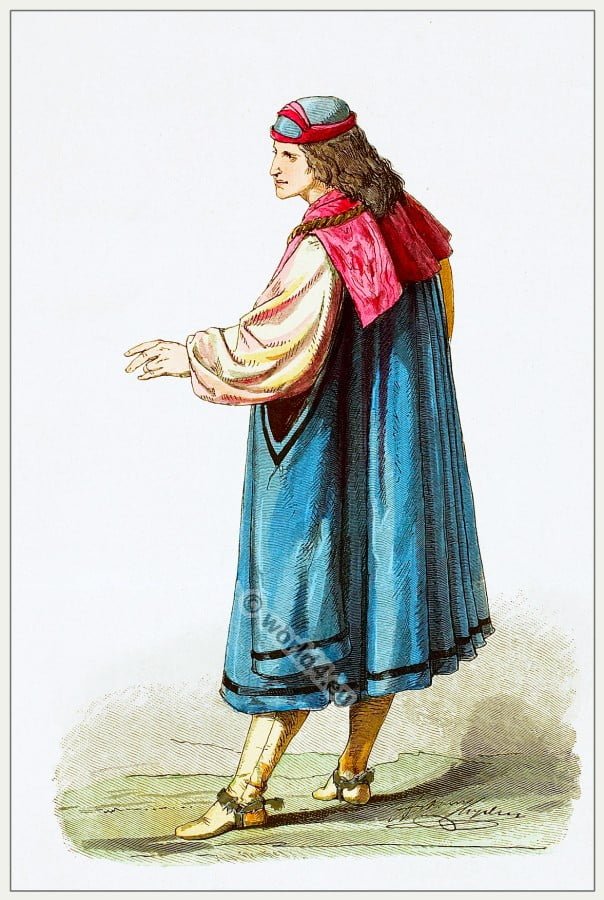Our engraving representing this ceremony, forms the last of the series of drawings by King Rene.
Tag: Gothic costumes
Medieval gothic era. The clothes in the Middle Ages reflected the place of the person dressed in the medieval estate system of Christian Europe again. The color choice was a distinguishing factor between the estates. In the Gothic clothing became increasingly elaborate. The fashions of the early, high and late Gothic differ very much from each other. At the beginning of the early Gothic in the 13th century, the male fashion of female approaches sharply. Both sexes have long outerwear in the form of a so-called Cotte. It predominates initially seem a little form-fitting fashion, showing essentially towering, slim body – a common ground with the gothic architecture.
The Alba. Liturgical costume. 13th century. Bavarian National Museum.
Alba, Liturgical, costume, middle ages,
Dalmatica 13th century. Liturgical garment. Halberstadt Cathedral Museum.
Dalmatic, a long robe with wide but short sleeves that was worn especially in the Middle Ages in Dalmatia instead of the Roman Tunica.
Albe 13th century. Baptismal garment. German Liturgical costume.
Traditionally worn by Catholic priests as liturgical undergarment under the chasuble.
Burgundian Lady of the castle, 15th century.
Burgundy nobility costume in 1450. Gothic, middle ages fashion history
Medieval Burgundian costume in 1450.
Fashion plate of Burgundy women’s dress in 15th century.
Burgundian Lord during prayer, 1450.
Gothic fashion period. Burgundy was famous for fancy and precious clothes.
Costume Burgundian noble woman in the 15th century.
Burgundian noble woman in 1450, late Medieval period.
Costume Burgundian nobleman15th century.
Costume Burgundian nobleman, 1450. Burgundian nobleman in the 15th century. Medieval fashion. The main feature is the sleeveless Surcoat over a loose shirt. As headgear he wears a flat beret. On the legs… Read More
Burgundy Princess with hunting falcon
Burgundy Princess with hunting falcon at the beginning of the 15th century.

